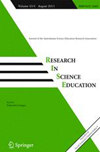Research In Science EducationSCIESSCI
國(guó)際簡(jiǎn)稱:RES SCI EDUC 參考譯名:科學(xué)教育研究
- 基本信息:
- ISSN:0157-244X
- E-ISSN:1573-1898
- 是否OA:未開(kāi)放
- 是否預(yù)警:否
- TOP期刊:否
- 出版信息:
- 出版地區(qū):NETHERLANDS
- 出版商:Springer Nature
- 出版語(yǔ)言:English
- 出版周期:6 issues per year
- 出版年份:1970
- 研究方向:EDUCATION & EDUCATIONAL RESEARCH
- 評(píng)價(jià)信息:
- 影響因子:2.2
- CiteScore指數(shù):6.4
- SJR指數(shù):1.045
- SNIP指數(shù):1.731
- 發(fā)文數(shù)據(jù):
- Gold OA文章占比:29.32%
- 研究類文章占比:100.00%
- 年發(fā)文量:52
- 自引率:0.0869...
- 開(kāi)源占比:0.2225
- 出版撤稿占比:0
- 出版國(guó)人文章占比:0.04
- OA被引用占比:0.5388...
英文簡(jiǎn)介Research In Science Education期刊介紹
2020 Five-Year Impact Factor: 4.021
2020 Impact Factor: 5.439
Ranking: 107/1319 (Education) – Scopus
2020 CiteScore 34.7 – Scopus
Research in Science Education (RISE ) is highly regarded and widely recognised as a leading international journal for the promotion of scholarly science education research that is of interest to a wide readership.
RISE publishes scholarly work that promotes science education research in all contexts and at all levels of education. This intention is aligned with the goals of Australasian Science Education Research Association (ASERA), the association connected with the journal.
You should consider submitting your manscript to RISE if your research:
Examines contexts such as early childhood, primary, secondary, tertiary, workplace, and informal learning as they relate to science education; and
Advances our knowledge in science education research rather than reproducing what we already know.
RISE will consider scholarly works that explore areas such as STEM, health, environment, cognitive science, neuroscience, psychology and higher education where science education is forefronted.
The scholarly works of interest published within RISE reflect and speak to a diversity of opinions, approaches and contexts. Additionally, the journal’s editorial team welcomes a diversity of form in relation to science education-focused submissions. With this in mind, RISE seeks to publish empirical research papers.
Empircal contributions are:
Theoretically or conceptually grounded;
Relevant to science education theory and practice;
Highlight limitations of the study; and
Identify possible future research opportunities.
From time to time, we commission independent reviewers to undertake book reviews of recent monographs, edited collections and/or textbooks.
Before you submit your manuscript to RISE, please consider the following checklist. Your paper is:
No longer than 6000 words, including references.
Sufficiently proof read to ensure strong grammar, syntax, coherence and good readability;
Explicitly stating the significant and/or innovative contribution to the body of knowledge in your field in science education;
Internationalised in the sense that your work has relevance beyond your context to a broader audience; and
Making a contribution to the ongoing conversation by engaging substantively with prior research published in RISE.
While we encourage authors to submit papers to a maximum length of 6000 words, in rare cases where the authors make a persuasive case that a work makes a highly significant original contribution to knowledge in science education, the editors may choose to publish longer works.
期刊簡(jiǎn)介Research In Science Education期刊介紹
《Research In Science Education》自1970出版以來(lái),是一本教育學(xué)優(yōu)秀雜志。致力于發(fā)表原創(chuàng)科學(xué)研究結(jié)果,并為教育學(xué)各個(gè)領(lǐng)域的原創(chuàng)研究提供一個(gè)展示平臺(tái),以促進(jìn)教育學(xué)領(lǐng)域的的進(jìn)步。該刊鼓勵(lì)先進(jìn)的、清晰的闡述,從廣泛的視角提供當(dāng)前感興趣的研究主題的新見(jiàn)解,或?qū)彶槎嗄陙?lái)某個(gè)重要領(lǐng)域的所有重要發(fā)展。該期刊特色在于及時(shí)報(bào)道教育學(xué)領(lǐng)域的最新進(jìn)展和新發(fā)現(xiàn)新突破等。該刊近一年未被列入預(yù)警期刊名單,目前已被權(quán)威數(shù)據(jù)庫(kù)SCIE、SSCI收錄,得到了廣泛的認(rèn)可。
該期刊投稿重要關(guān)注點(diǎn):
Cite Score數(shù)據(jù)(2024年最新版)Research In Science Education Cite Score數(shù)據(jù)
- CiteScore:6.4
- SJR:1.045
- SNIP:1.731
| 學(xué)科類別 | 分區(qū) | 排名 | 百分位 |
| 大類:Social Sciences 小類:Education | Q1 | 165 / 1543 |
89% |
CiteScore 是由Elsevier(愛(ài)思唯爾)推出的另一種評(píng)價(jià)期刊影響力的文獻(xiàn)計(jì)量指標(biāo)。反映出一家期刊近期發(fā)表論文的年篇均引用次數(shù)。CiteScore以Scopus數(shù)據(jù)庫(kù)中收集的引文為基礎(chǔ),針對(duì)的是前四年發(fā)表的論文的引文。CiteScore的意義在于,它可以為學(xué)術(shù)界提供一種新的、更全面、更客觀地評(píng)價(jià)期刊影響力的方法,而不僅僅是通過(guò)影響因子(IF)這一單一指標(biāo)來(lái)評(píng)價(jià)。
中科院SCI分區(qū)Research In Science Education 中科院分區(qū)
| 大類學(xué)科 | 分區(qū) | 小類學(xué)科 | 分區(qū) |
| 教育學(xué) | 3區(qū) | EDUCATION & EDUCATIONAL RESEARCH 教育學(xué)和教育研究 | 3區(qū) |
中科院分區(qū)表 是以客觀數(shù)據(jù)為基礎(chǔ),運(yùn)用科學(xué)計(jì)量學(xué)方法對(duì)國(guó)際、國(guó)內(nèi)學(xué)術(shù)期刊依據(jù)影響力進(jìn)行等級(jí)劃分的期刊評(píng)價(jià)標(biāo)準(zhǔn)。它為我國(guó)科研、教育機(jī)構(gòu)的管理人員、科研工作者提供了一份評(píng)價(jià)國(guó)際學(xué)術(shù)期刊影響力的參考數(shù)據(jù),得到了全國(guó)各地高校、科研機(jī)構(gòu)的廣泛認(rèn)可。
中科院分區(qū)表 將所有期刊按照一定指標(biāo)劃分為1區(qū)、2區(qū)、3區(qū)、4區(qū)四個(gè)層次,類似于“優(yōu)、良、及格”等。最開(kāi)始,這個(gè)分區(qū)只是為了方便圖書(shū)管理及圖書(shū)情報(bào)領(lǐng)域的研究和期刊評(píng)估。之后中科院分區(qū)逐步發(fā)展成為了一種評(píng)價(jià)學(xué)術(shù)期刊質(zhì)量的重要工具。
JCR分區(qū)Research In Science Education JCR分區(qū)
| 按JIF指標(biāo)學(xué)科分區(qū) | 收錄子集 | 分區(qū) | 排名 | 百分位 |
| 學(xué)科:EDUCATION & EDUCATIONAL RESEARCH | SSCI | Q1 | 169 / 756 |
77.7% |
| 按JCI指標(biāo)學(xué)科分區(qū) | 收錄子集 | 分區(qū) | 排名 | 百分位 |
| 學(xué)科:EDUCATION & EDUCATIONAL RESEARCH | SSCI | Q1 | 154 / 756 |
79.7% |
JCR分區(qū)的優(yōu)勢(shì)在于它可以幫助讀者對(duì)學(xué)術(shù)文獻(xiàn)質(zhì)量進(jìn)行評(píng)估。不同學(xué)科的文章引用量可能存在較大的差異,此時(shí)單獨(dú)依靠影響因子(IF)評(píng)價(jià)期刊的質(zhì)量可能是存在一定問(wèn)題的。因此,JCR將期刊按照學(xué)科門(mén)類和影響因子分為不同的分區(qū),這樣讀者可以根據(jù)自己的研究領(lǐng)域和需求選擇合適的期刊。
發(fā)文數(shù)據(jù)
- 國(guó)家/地區(qū)數(shù)量
- USA95
- Australia53
- GERMANY (FED REP GER)22
- Turkey20
- England19
- CHINA MAINLAND17
- Spain17
- Canada15
- Sweden15
- South Africa11
本刊中國(guó)學(xué)者近年發(fā)表論文
-
1、Assessment of Context-Based Chemistry Problem-Solving Skills: Test Design and Results from Ninth-Grade Students
Author: Chi, Shaohui; Wang, Zuhao; Liu, Xiufeng
Journal: RESEARCH IN SCIENCE EDUCATION. 2023; Vol. 53, Issue 2, pp. 295-318. DOI: 10.1007/s11165-022-10056-8
-
2、Negotiation of Epistemological Understandings and Teaching Practices Between Primary Teachers and Scientists about Artificial Intelligence in Professional Development
Author: Dai, Yun
Journal: RESEARCH IN SCIENCE EDUCATION. 2023; Vol. 53, Issue 3, pp. 577-591. DOI: 10.1007/s11165-022-10072-8
-
3、Kindergarten Directors' Perceptions and Implementation of STEM Education
Author: Wu, Zhenhua; Huang, Li'an
Journal: RESEARCH IN SCIENCE EDUCATION. 2023; Vol. , Issue , pp. -. DOI: 10.1007/s11165-023-10105-w
-
4、Disciplinary Learning Motivation and Its External Influencing Factors: Taking Physics in a Selection Crisis as an example
Author: Jian-Xin, Yao; Yu-Xuan, Xiang; Tian, Luo; Chu-Fan, Deng; Yu-Ying, Guo; Fortus, David
Journal: RESEARCH IN SCIENCE EDUCATION. 2023; Vol. , Issue , pp. -. DOI: 10.1007/s11165-023-10112-x
投稿常見(jiàn)問(wèn)題
-
請(qǐng)問(wèn)這本期刊屬于什么級(jí)別呢?可用于職稱評(píng)定嗎?
一般刊物只分省級(jí)、部級(jí)、核心,期刊本身是沒(méi)有幾類劃分的,具體是幾類或者幾級(jí),您可以對(duì)照單位的分類文件確認(rèn)一下。Research In Science Education雜志是由Springer Nature出版的一本SCIE、SSCI,可用于職稱評(píng)定。
-
你們能夠提供哪些核心期刊的咨詢服務(wù)?
大多數(shù)核心期刊我們都是可以提供咨詢服務(wù)的。目前核心期刊主要分為以下幾類:1.國(guó)內(nèi)核心:按照權(quán)威度排序,社科類:南大核心>南大擴(kuò)展>北大核心>科技核心 按照權(quán)威度排序。工科類:CSCD C庫(kù)>CSCD E庫(kù)(相當(dāng)于CSCD擴(kuò)展)>北大核心>科技核心。2.國(guó)外核心(全英文):按照權(quán)威度排序?yàn)椋篠SCI=SCI>EI>ISTP=CPCI。
-
想快速發(fā)表,可以加急嗎?
為了確保您的職稱評(píng)定順利進(jìn)行,我們建議提前半年到一年開(kāi)始準(zhǔn)備,這樣能夠保證有充足的時(shí)間來(lái)處理所有相關(guān)事宜。如果客戶需要加急服務(wù),我們會(huì)與雜志社進(jìn)行溝通,以確定是否可以提供加急服務(wù)。請(qǐng)注意,如果確認(rèn)可以加急,可能會(huì)收取一定的加急費(fèi)用。
-
你們提供的服務(wù)可以確保稿件被發(fā)表嗎?
期刊編輯會(huì)綜合考慮多個(gè)因素,如發(fā)表范圍、學(xué)術(shù)價(jià)值和原創(chuàng)性等,對(duì)稿件進(jìn)行綜合評(píng)估。盡管任何機(jī)構(gòu)均無(wú)法保證每篇稿件都會(huì)被發(fā)表,但我們可以用專業(yè)知識(shí)和豐富經(jīng)驗(yàn),協(xié)助您理解并遵循期刊的發(fā)表要求,從而提高您的稿件被發(fā)表的機(jī)率。
-
請(qǐng)問(wèn)期刊發(fā)表的費(fèi)用如何?
期刊發(fā)表的費(fèi)用因期刊不同而異。根據(jù)您的需求,我們會(huì)為您推薦性價(jià)比最高的期刊,并提供專業(yè)的期刊供您選擇。一般來(lái)說(shuō),只要符合職稱要求,大多數(shù)作者都會(huì)選擇性價(jià)比最高的期刊作為意向期刊進(jìn)行重點(diǎn)咨詢。我們會(huì)為您提供詳細(xì)的期刊信息和費(fèi)用說(shuō)明,以確保您能夠做出明智的選擇。
-
如果稿件被拒,未能成功發(fā)表,費(fèi)用是否可以退還?
一般來(lái)說(shuō),我們推薦的期刊和您的專業(yè)方向、文章情況都是匹配的,極少出現(xiàn)稿件被拒的情況。如果稿件被拒,期刊編輯會(huì)提供詳細(xì)的拒稿信和建議,以幫助您了解拒稿原因并改進(jìn)您的稿件。關(guān)于退款政策,具體情況可能因期刊不同而異,請(qǐng)您咨詢我們的工作人員以獲取詳細(xì)信息。
相關(guān)期刊推薦
-
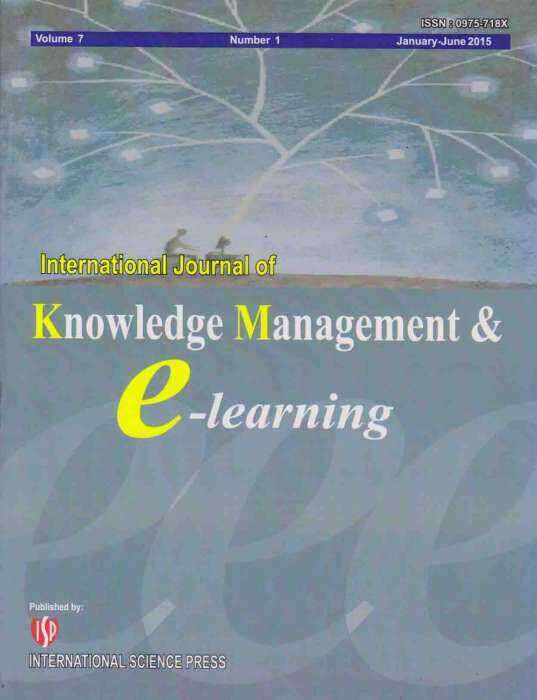
Knowledge Management & E-learning-an International Journal
中科院 4區(qū) JCR Q1
大類:教育學(xué)
-
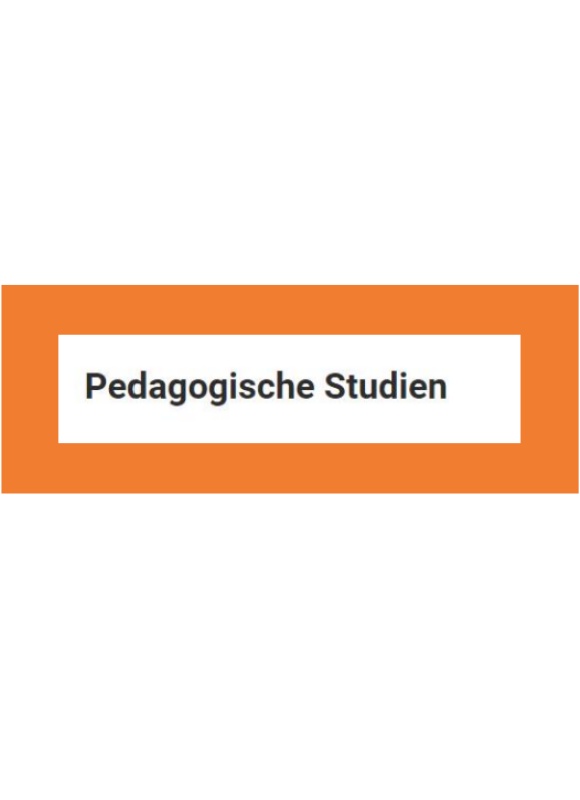
Pedagogische Studien
中科院 4區(qū) JCR Q4
大類:教育學(xué)
-
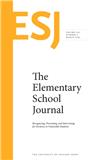
Elementary School Journal
中科院 4區(qū) JCR Q2
大類:教育學(xué)
-
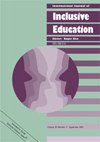
International Journal Of Inclusive Education
中科院 3區(qū) JCR Q2
大類:教育學(xué)
-
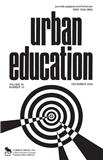
Urban Education
中科院 2區(qū) JCR Q2
大類:教育學(xué)
-
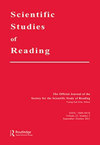
Scientific Studies Of Reading
中科院 2區(qū) JCR Q1
大類:教育學(xué)
熱門(mén)期刊推薦
-
International Journal Of Educational Development
中科院 3區(qū) JCR Q1
-
Studies In Educational Evaluation
中科院 2區(qū) JCR Q1
-
Education And Information Technologies
中科院 2區(qū) JCR Q1
-
International Journal Of Educational Technology In Higher Education
中科院 1區(qū) JCR Q1
-
Educational Review
中科院 3區(qū) JCR Q1
-
Asia Pacific Journal Of Education
中科院 4區(qū) JCR Q2
-
Asia Pacific Education Review
中科院 3區(qū) JCR Q1
-
British Educational Research Journal
中科院 3區(qū) JCR Q1
